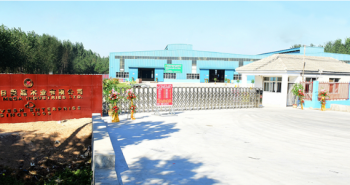This Standard was prepared by the Joint Standards Australia/Standards New Zealand
Committee TM-008, Plywood Timber Products, to supersede AS/NZS 2269:2004,
Plywood—Structural.
The objective of this Standard is to provide minimum performance requirements and
specifications for the manufacture and application of structural plywood, acceptable to
users, specifiers, manufacturers, and building authorities in Australia and New Zealand.
Plywood manufactured to this Standard is suitable for use in permanent structures. The
plywood may be of either hardwood or softwood veneers, or a combination of both. The
quality of veneers is judged in the finished panel.
The objective of this revision is to strengthen some sections of the 2004 version that have
been subject to misinterpretation. It is intended that by strengthening these sections of the
Standard, particularly those dealing with the application of F-grades or characteristic
structural properties to structural plywood, the opportunities for misinterpretation will be
minimized. The probability of structural plywood, claimed to be manufactured to this
Standard, having the correct assignment of F-grades or characteristic structural properties
will be improved, further minimizing the risk to users of the product.
Additionally, this Standard is revised to form Part 0 of the AS/NZS 2269 series, Plywood—
Structural, which comprises the following parts:
AS/NZS
2269 Plywood—Structural
2269.0 Part 0: Specifications (this Standard)
2269.1 Part 1: Determination of structural properties—Test methods (to supersede
AS/NZS 2098.9:1995, Methods of test for veneer and plywood,
Method 9: Procedures for in-grade testing of structural plywood)
2269.2 Part 2: Determination of structural properties—Evaluation methods
Five standard veneer qualities, A, S, B, C and D, are prescribed, as follows:
A⎯a high quality appearance grade, suitable for clear finishing.
S⎯an appearance grade, which permits characteristics as a decorative feature.
B⎯an appearance grade suitable for high quality paint finishing.
C⎯a non-appearance grade with a solid surface.
D⎯a non-appearance grade with permitted open imperfections.
The surface grade of the plywood is determined by the quality of the face and back veneers.
Three methods for determining the stress grade for the plywood are described using the
following bases:
(a) Veneers of determined stiffness.
(b) Mechanical F-grading of plywood panels.
(c) In-grade testing of plywood panels.
Four formaldehyde emission classes, E0, E1, E2, and E3, are included.
For the design of structures or elements incorporating the use of plywood specified in this
Standard, the structural grades will have characteristic strength and stiffness values as
detailed in Table 4.1. These characteristic properties are to be assigned in accordance with
the requirements of AS 1720.1, Timber structures, Part 1: Design methods, and NZS 3603,
This is a free 7 page sample. Access the full version online.
Timber Structures Standard.
3 AS/NZS 2269.0:2008
This Standard covers the basic structural plywood product. Particular end uses may require
additional processing, preservative treatment or surface finishing. Structural plywood that is
exposed for a long term to wet or damp conditions, or full weather exposure will need
preservative treatment in accordance with AS/NZS1604.3, Specification for preservative
treatment, Part 3: Plywood. Under these exposure conditions the surface of the plywood
will need adequate protection.
Notes to the text contain information and guidance. They are not an integral part of the
Standard.
Statements expressed in mandatory terms in notes to figures are deemed to be requirements
of this Standard.
The terms ‘normative’ and ‘informative’ have been used in this Standard to define the
application of the appendix to which they apply. A ‘normative’ appendix is an integral part
of a Standard, whereas an ‘informative’ appendix is only for information and guidance.

